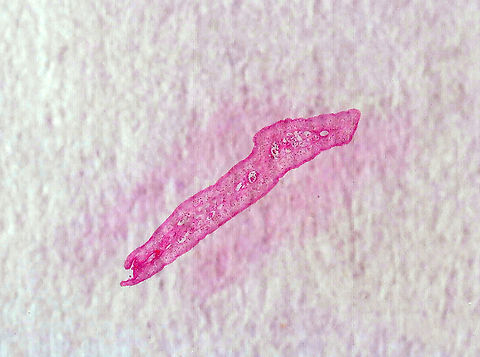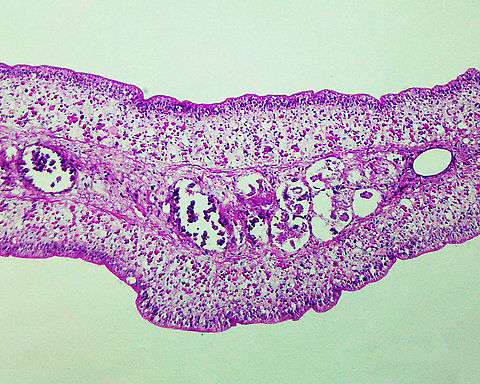
Appearance
''T. saginata'' is the largest of species in the genus ''Taenia''. An adult worm is normally 4 to 10 m in length, but can become very large; specimens over 22 m long are reported. Typical of cestodes, its body is flattened dorsoventrally and heavily segmented. It is entirely covered by a tegument. The body is white in colour and consists of three portions: scolex, neck, and strobila. The scolex has four suckers, but they have no hooks. Lack of hooks and a rostellum is an identifying feature from other ''Taenia'' species. The rest of the body proper, the strobila, is basically a chain of numerous body segments called proglottids. The neck is the shortest part of the body, and consists of immature proglottids. The midstrobila is made of mature proglottids that eventually lead to the gravid proglottids, which are at the posterior end. An individual can have as many as 1000 to 2000 proglottids.''T. saginata'' does not have a digestive system, mouth, anus, or digestive tract. It derives nutrients from the host through its tegument, as the tegument is completely covered with absorptive hair-like microtriches. It is also an acoelomate, having no body cavity. The inside of each mature proglottid is filled with muscular layers and complete male and female reproductive systems, including the tubular unbranched uterus, ovary, genital pore, testes, and vitelline gland. In the gravid proglottid, the uterus contains up to 15 side branches filled with eggs.
''T. saginata'' has a strong resemblance to the other human tapeworms, such as ''Taenia asiatica'' and ''Taenia solium'', in structure and biology, except for few details. It is typically larger and longer, with more proglottids, more testes, and higher branching of the uteri. It also lacks an armed scolex unlike other ''Taenia''. Like the other tapeworms, it causes taeniasis inside the human intestine, but does not cause cysticercosis. Its infection is relatively harmless and clinically asymptomatic.

Distribution
It is found globally and most prevalently where cattle are raised and beef is consumed. It is relatively common in Africa, Europe, Southeast Asia, South Asia, and Latin America. Humans are generally infected as a result of eating raw or undercooked beef which contains the infective larvae, called cysticerci. As hermaphrodites, each body segment called proglottid has complete sets of both male and female reproductive systems. Thus, reproduction is by self-fertilisation. From humans, embryonated eggs, called oncospheres, are released with faeces and are transmitted to cattle through contaminated fodder. Oncospheres develop inside muscle, liver, and lungs of cattle into infective cysticerci.References:
Some text fragments are auto parsed from Wikipedia.